HIV Test Report Sample Explained : Is it Conclusive?
In this blog we explain different types of HIV Test Reports, including the 4th Generation test report, 3rd generation test report, CLIA and CMIA reports and also the PCR and Western Blot Reports. We also explain what Reactive and Non-reactive or Positive and Negative Means, together with how conclusive these reports are at different stages of an HIV infection.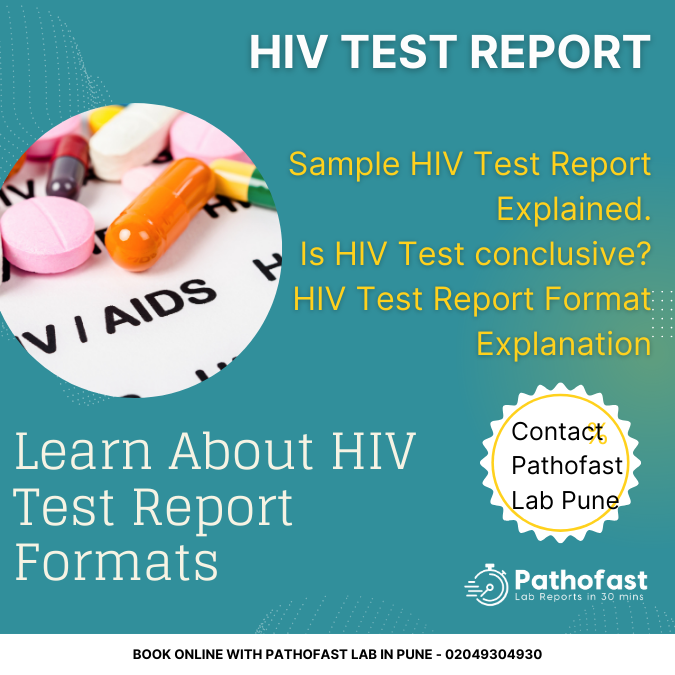
What are the differnt Types of HIV Test Reports?
HIV Testing has undergone several advancements and changes, ever since the virus was first discovered and testing began in the 1980's. The different test types in use today are the 3rd generation test, 4th generation tests, PCR Tests and Western Blot Tests.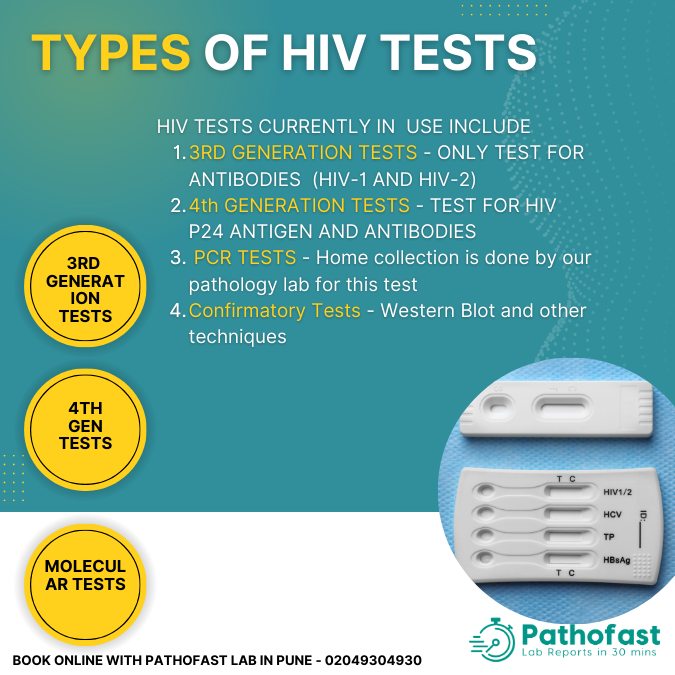
Third Generation HIV Test
These tests only check for the presence of antibodies against the HIV virus. They normally check for antibodies against HIV-1 and HIV-2 which are the two common strains of the HIV virus. Antibodies are created by the body to fight against the virus. These tests do not check for the presence of the HIV antigen (p24). As a result, they can only detect the presence of the infection around 8-12 weeks after infection has already occurred.Fourth Generation HIV Tests
These tests check for the presence of the HIV P24 antigen as well as antibodies. They were launched later and are newer and the currently recommended first line tests worldwide. These tests can detect the virus at an earlier date (usually within 12-23 days)of the infection. There are many different types of 4th generation tests and report formats are described in this article below.ELISA Tests for HIV
ELISA or Enzyme Linked Immunoassays are a type of test that detects the presence of Antibodies to HIV. ELISA is no longer recommended as the first line or even confirmatory test for HIV. ELISA tests can produce false positives and reflex testing with Western Blot used to be done in the past for confirmation.RNA PCR Test for HIV
RNA PCR detects the RNA of the HIV virus. It is the gold standard for HIV detection, and can detect the virus as early as 4-5 days in some cases. RNA PCR Is not a first line HIV test, but it is often done to rule out or rule in HIV, in cases where the first line test is indeterminate.Western Blot Test for HIV
Western Blot Tests were done in the past as a second line test, in case ELISA was positive. They are difficult to perform, time consuming and often are highly prone to changes in results due to operator errors. This test is not discussed, as it is not recommended in most developed countries anymore.HIV Test Report Explained - 4th Generation Test
The 4th generation test, as mentioned above tests for the presence of HIV p24 antigen as well as the HIV-1 and HIV-2 antibodies. The test report usually contains a single result - either Reactive or Non-reactive.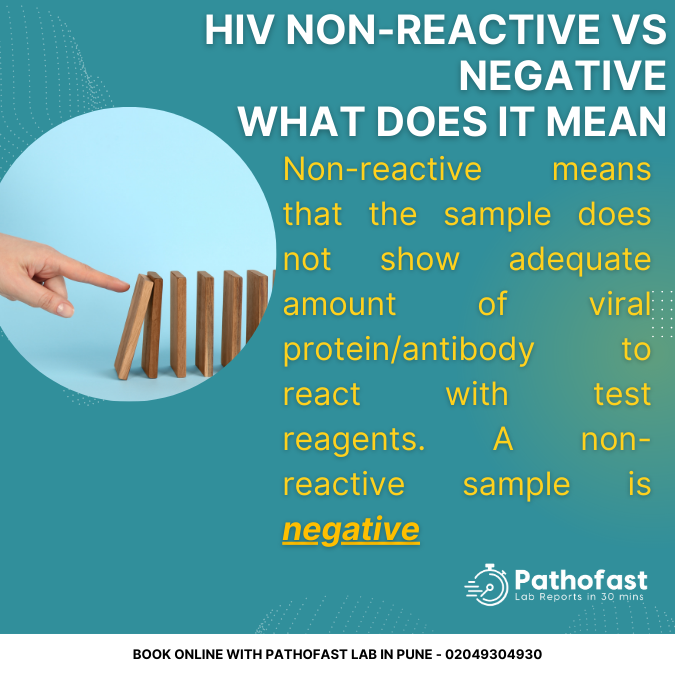
What is a Reactive Result and does it mean that I am HIV Positive?
Reactive is a terminology used to report the presence or absence of HIV proteins or antibodies in the sample. Reactive means that one or more of these were detected in the sample. It probably means that you are HIV Positive, but further testing will be required for confirmation.What is a Non-reactive result and does it mean that I am HIV Negative?
A non-reactive result implies that neither the p24 viral proteins, nor the antibodies were detected in your blood. This probably means that you do not have the virus. It is important to note that the test may be reported as non-reactive in the window period (the time before the virus becomes detectable).How conclusive is a fourth generation HIV test?
A fourth generation HIV test is considered to be 99.8% accurate as compared to other state of the art methods. The accuracy of the test varies with time from infection. The following table gives a rough estimate of the accuracy of the test at varying durations from the time of suspected infection.| Days Since HIV Infection | Accuracy |
|---|---|
| 5 days | <10% accurate |
| 12 days | <25% accuracy |
| 19 days | 30-50% accuracy |
| 43 days | Peak Accuracy: 98% |
Understanding a 4th generation HIV rapid test report
The rapid or lateral flow immunochromatography test method is the most commonly performed 4th generation test. The result is reported as Non-reactive meaning negative (in case of no detectable viral antigens or antibodies). The result will be reported as Reactive(if either antigen or antibody is seen).The test kit consists of 3 seperate lines. One line is called the Control or C Line. This line should be red/visible after adding the sample, to indicate that the test kit is working properly. The other two lines indicate the presence of the HIV p24 antigen or HIV 1/2 antibodies. If neither of these two lines is seen, the report is non-reactive or negative. If one or the other line is seen, the report will simply read "reactive". As per most guidelines, a reactive result is confirmed on another sample or by testing with a different test method.
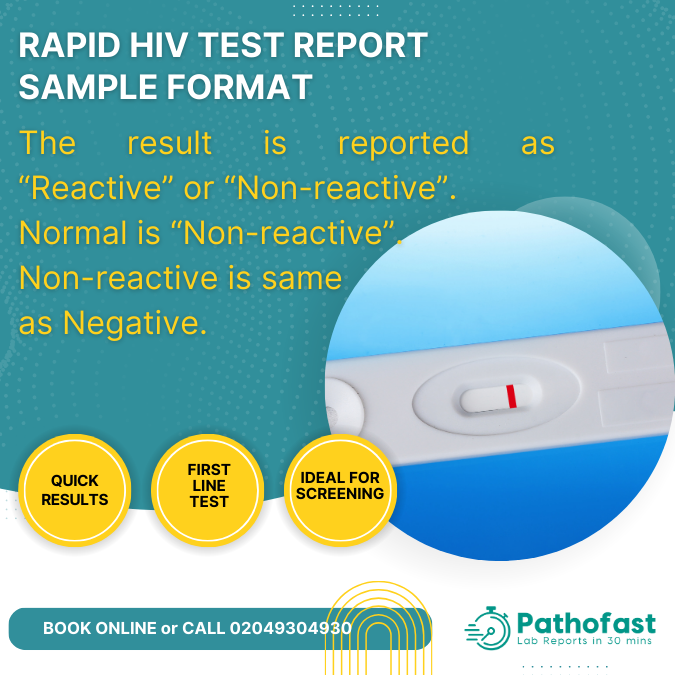
Understanding a 4th generation CLIA automated HIV Test report
CLIA Is a technology that automates the ELISA Process. It consists of automated pipetting of sample and reagents. THe chief advantage of CLIA Is that it is possible to detect even lower thresholds of viral proteins or antibodies.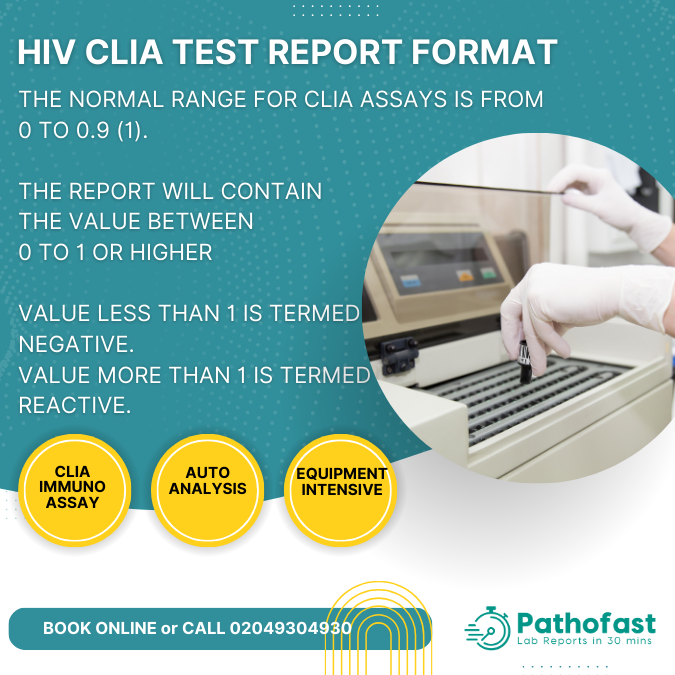
Normal Range of CLIA HIV Test Report
CLIA test reports contain of a normal range of 0 to 1. The report format will include the value (between 0 to 1) and an impression (Non-reactive : if the value is between 0 to 1), or (Reactive : for values greater than 1). The test measures the presence of p24 antigen and antibodies together.Does the CLIA 4th generation test report contain seperate results for antigen and antibodies?
No the CLIA test result, will contain a single numeric result. This is a combination of the signals for antigen and antibodies. As a result, it does not tell you which of the two is present.How conclusive is the 4th generation CLIA Test result ?
The CLIA test is probably more conclusive or sensitive than rapid test assays, but results are comparable. Its sensitivity with respect to time, is similar to that of other 4th generation testsCMIA HIV Report Explanation
CMIA Or chemilumiscence ImmunoAssay is a type of automated ELISA technique that uses magnetic particles to facilitate binding of antigens and antibodies. It is as sensitive and comparable to the CLIA technique. The HIV CMIA test report consists of a signal to noise ratio or S/CO value.Similar to the CLIA this value is standardized between 0 to 1 for negative or non-reactive samples. Values above 1 are considered to be reactive or positive for HIV.
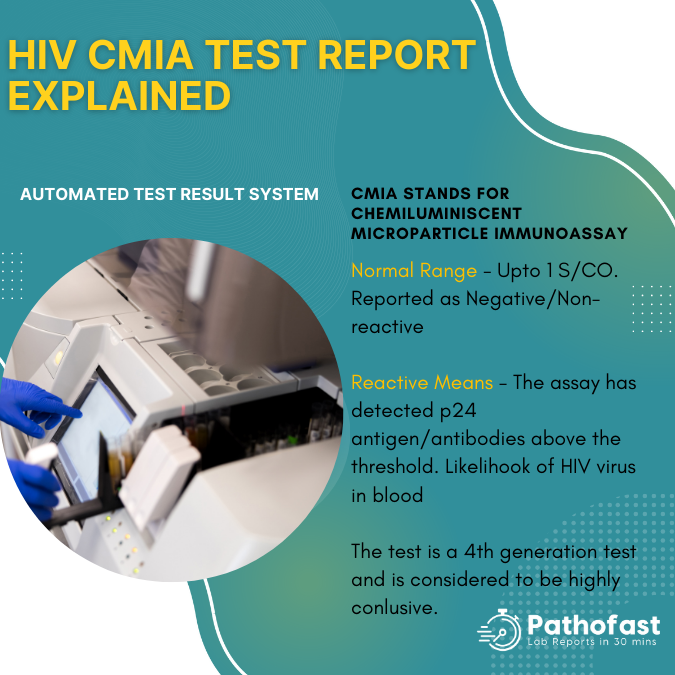

 By: Dr.Bhargav Raut
By: Dr.Bhargav Raut